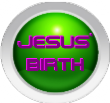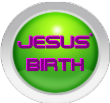Before Beginning This Study: Essential Information
How The Biblical Timeline Was Developed:
This entire study rests upon God's Seven-Millennium Plan For The World. With study, this 7000-year timespan emerges from the pages of the Bible, and is an account of God's plan to bring mankind full circle from the perfection of the original Earth at Eden, overcoming the fall from Grace which we have so foolishly chosen, and then finally back to the perfection of the New Earth after 7000 years. This is apparently the amount of time that will be necessary for lessons to be learned, not only by mankind but also by those angels which have also chosen their own fall from Grace. Hebroots.com has another concise but fuller explanation. Here are just a few of the many good articles on this subject:
The Anchor Point: Jesus' Crucifixion Date - What We Know About The Timeline:
1 - In his gospel, John makes it very plain that the day Jesus died "was the day of preparation for the Passover." - John 19:42
Leviticus 23 details Israel's Sabbaths. The first month of the year is Nisan (one of a few names), with Passover always on Nisan 14 - it is not a Sabbath Day. It is the
day the Lamb was slain and the work was done in Preparation for the Feast Day; and work such as this was simply not allowed on a Sabbath Day. The Feast Day
follows immediately at sundown, and is the next day, Nisan 15. Nisan 15 begins with the Seder meal which begins the Feast of Unleavened Bread. It is a Sabbath Day:
4 'These are the appointed times of the LORD, holy convocations which you shall proclaim at the times appointed for them
5 'In the first month [Nisan], on the fourteenth day of the month at twilight [just before the Hebrew day's end at sunset] is the LORD'S Passover.
6 'Then on the fifteenth day of the same month there is the Feast of Unleavened Bread to the LORD; for seven days you shall eat unleavened bread.
7 'On the first day [first of the 7 days: Nisan 15] you shall have a holy convocation; you shall not do any laborious work. - Leviticus 23:4-7
Jesus, who is "the Lamb who has been slain" (Rev 13:8), is our Perfect Lamb who was slain for our sins. He is the One foreshadowed by the yearly sacrifice of the
Temple lambs of the Old Covenant every Nisan 14. John made it clear in his gospel that, just as these lambs were slain, Jesus was slain late in the day on Nisan 14,
the Preparation Day for the Passover, just prior to the Passover event itself at twilight, and the subsequent Feast of Unleavened Bread on Nisan 15 - a yearly Sabbath
day. [This was studied here.]
2 - Jesus said there would be "three days and three nights" after His death until He would resurrect. - Matthew 12:40
3 - After Jesus died, His body was brought to the tomb for burial. This was done quickly because Sabbath was near, so the women at the tomb couldn't immediately
prepare the body for burial. They didn't have enough time to do this work before the beginning of Sabbath, and of course they then also had to wait until Sabbath had
ended before doing the work. - Luke 23:54 - 24:1
Jesus' Date of Birth - What We Know About The Timeline:
1 - Jesus was born when Herod the Great was king over Judea, near the time of Herod's death. - Matthew 2:1 & 13-15
Matthew goes into some detail about Jesus' birth, with the reign of King Herod the Great being the most helpful clue in determining when Jesus was born.
Herod was a sick man (in more ways than one) approaching death, who had his own family members killed in order to maintain power. Shortly after Jesus'
birth Herod also tried to have Jesus killed, but Jesus' family escaped to Egypt and stayed there until Herod's death. We know this was a short period of time
because Luke, who was the only other biblical writer to detail Jesus' birth, goes through the event without even mentioning this escape. In fact, Luke states
that just forty days after the birth, the family had left Bethlehem and was now in Jerusalem in accordance with Mosaic Law. - Luke 2:21-24; Leviticus 12:1-8
Most scholars believe that Herod died c 4 BC, but this seems to be based as much upon tradition as evidence. The latest research suggests that Herod the
Great died in 1 BC, and that Jesus would have been born no more than two years earlier, in 3 or 2 BC. (source pt1, pt2, pt3)
2 - "When He began His ministry, Jesus Himself was about thirty years of age...." - Luke 3:23
Creation's Date - What We Know About The Timeline:
1 - God's Creation of the Earth took place in a six day period, from Sunday through Friday. The seventh day God rested. - Genesis 1:1 - 2:3
Creation's Date - What We Can Conclude:
From a Timeline perspective we don't know much more than this until we again bring to mind God's Seven-Millennium Plan For The World. With this perspective, it seems that there would likely be Millennial Markers - Anchor Point Events occurring precisely at the beginnings or endings of millennia. Since it is the beginning of all of God's dealings with mankind, Creation would necessarily be the First Marker.
Because we have almost no direct biblical information as to the when of Creation, the goal has become to discover a subsequent Millennial Marker which would then point - in exact millennia - back to Creation. It has historically been common practice to look at certain other biblical events to see if they might mark these millennia, in particular the incarnation and ministry of the Redeemer of the World, which does certainly seem to be a prime place to look for such a connection.
The most famous timeline connector of these two events is the 17th century Anglican Archbishop, James Ussher, whose work retains many supporters to this day. (source) Ussher calculated the Creation to have occurred on October 23, 4004 BC, but since his work has been proven incorrect (Jesus' Second Advent didn't happen in 2004) it has been suggested that he may have fudged his work just a little to come up with that year, since it is exactly Four Millennia prior to 4 BC, the year long supported as that of Jesus' birth. Whatever the case, in spacing these events to exactly four millennia, it appears that Ussher too believed in God's Seven-Millennium Plan For The World. (source)
How And Why The Biblical Timeline Was Created:
After having established three biblical events as anchor points, seeing how well they aligned with one another, and how the dating for each of them solved a number of otherwise potential problems; the way forward was obvious. It was time to get to the heart of the matter and attempt to solve the issue of God's Seven-Millennium Plan For The World : Is there one?
The place to begin is with the date of Creation - 3968 BC - and so the lineage of the ancients as given in Genesis, running from Adam to Joseph (son of Isaac), was laid down according to their year of birth and their age when they fathered the next generation. This easily-calculated lineage (at least for the large majority of entries) ended with Joseph and took us to the early 16th Century BC.
From there we were able to continue making progress through the study and varification of various biblical events, for which God had His writers give us invaluable timing information, often in the form of the number of intervening years, and often by relating events according to specific years of a king's reign - kings who have been very reliably assigned their times in the historical record. Some events took a bit of digging to ferret out enough detail to satisfy the need for confidence, but I have come through this study with a level of certainty which I would not have thought possible beforehand. I must give credit here to the people at bible.ca who created a simply outstanding Timeline Chart for the period of Israel's Divided Kingdom. An incredible amount of research produced for them a richly detailed document which was most helpful through that time period. I also learned the degree to which the biblical writers went, in order to provide dating information, making it obvious that all this detail was meant to be put to use.









Calandar Parameters:
Without establishing at least one reasonably strong Biblical-Event Anchor-Point within the biblical timeline; one that is helpful in determining successive Event Time-Points, it is difficult to establish relationships in time, for events which took place long ago, both relative to each other and also within the established historical record. And if we don't have an accurate understanding of the Biblical Calendar that the Bible's writers were using we may as well not even begin the project.
I wrote my Biblical Hebrew Calendar Creator (BHCC) software after it became clear that online Bible Calendar programs didn't always correctly include all the parameters which were used by the biblical Hebrews. Or it was impossible to know if all the parameters were operating, without being able to compare results from a program which I knew did include them.
I went to great effort to find the information necessary to create the Correct Calendar incorporating the Correct Parameters. You should know that there is some disagreement on precisely what those parameters should be, but more than once my decisions in this area were made quite easy after finding what the Bible has to say.
I believe my software, as closely as possible, reveals the Calendar that the Bible-Time Hebrews would have been guided by. When this information is viewed in conjunction with other information as revealed either within the Bible or within the historical record, the timing of certain crucial events can be established with a degree of certainty. Carrying on, the more information that subsequently aligns with and supports the dating of events in the timeline, the stronger one's confidence becomes in the dating methodology itself. We are speaking primarily of the Timing of certain special events in biblical history, and how, with a correctly functioning calendar creator in hand, those events can be seen to align with the special dates which God speaks of in the Bible. This is especially relevant to the prime years located near the End or the Beginning of a Millennium, and how the events of these years align with the Feasts and Festivals of the Old Covenant, which God delineates in Leviticus 23 - God's "appointed times"; God's moedim.
Some of the Calendar parameters pertaining to the biblical timeline that are included in the BHCC, and which may not be included in other programs:
- being a Lunar Based Calendar, accurate Moon Phase information is paramount. This information was taken from charts created from calculations used by NASA;
- during biblical times, not the New Moon itself, but the first "sliver" of the crescent moon (visible only at night) is what marks the beginning of each New Month (source);
- the "sliver" crescent is applied from the Exodus (1447 BC) onward, when God instructed Moses (source) about this, prior to this the actual time of the New Moon is used;
- the length of each month (29 or 30 days) is determined solely by the timing of the New Moon (or its Sliver Crescent); no contrived formulas of any kind have been added;
- the number of months in the year (12, or a 13th "leap" month) is determined solely by the timing of the New Moons with the Vernal Equinox, again no contrived formulas; and
- each New Year - the First Month, Nisan 1 - is determined by the New Moon which is closest to the Vernal Equinox, not the first one after it, as some calendars do.
After creating the BHCC, to begin the process of establishing a Biblical Timeline I needed to find a Biblical Event Anchor Point. Since we really do have quite a lot of information about Jesus' crucifixion both from history and the Bible, I began there. If I could pin down a solid (or at least a semi-solid) date when this occurred, I could then move on to see what else might be revealed; perhaps about the date of Jesus' birth, the date of Creation and so on; and ultimately how all this might create a coherent picture of the biblical timeline and God's Seven-Millennium Plan For The World.
It needs to be noted from the outset that this process is subjective in nature and as such, one simply cannot justify being dogmatic in their conclusions. There is more we need to know before anyone can say they are absolutely certain about these things, and those who do claim to be certain should be taken with a number of grains of salt. While I do believe God has led me to find the information I've been looking for, I have not received Divine Assurance that all things presented here are absolutely accurate. I have and will continue to pray that God will grant me that Assurance, as He did on one very special occasion in the past.
4 - The women came early Sunday morning, before sunrise "while it was still dark" (John 20:1) but Jesus had already resurrected in the waning hours of the night.
Remembering Jesus' "three days and three nights":
Now keep in mind that the Hebrews' days begin and end at sundown. So for example: Sunday night is the First Part of Sunday, and it actually begins at what
we consider to be Saturday Evening. If we now count back from Sunday night, three days and three nights, we will know the day of the week when Jesus died.
Well actually there are two ways to do this, and they give us different results:
i) The "post-dating" method counts only full time periods, and neither Nisan 14's part day nor Sunday's part night are counted. So we count back:
Saturday (1 night + 1 day) + Friday (1 night + 1 day) + Thursday (1 night + 1 day) = 3 days & 3 nights; to a late daytime Wednesday crucifixion.
ii) The "ante-dating" method, preferred and generally used by the Hebrews, counts parts of time periods. So again counting back we have:
Sunday (1 (part) night) + Saturday (1 night + 1 day) + Friday (1 night + 1 day) + Thursday (1 (part) day) = 3 days & 3 nights; to a late daytime Thursday crucifixion.
But how can we know whether to use the post-dating or the ante-dating method to count the days and nights; and so how do we know whether a Thursday crucifixion
is correct, or a Wednesday crucifixion. For two reasons we choose the ante-dating method which reveals the late Thursday afternoon crucifixion:
i) This was the method most often used by the Hebrews in the Bible, so we use it unless there is a good reason to not use it. I have never encountered such a reason.
ii) Let's get back to the women who didn't have time to prepare Jesus' body because they had to wait until the end of Sabbath. The Sabbath they were waiting for to end,
was the yearly Sabbath of the Feast of Unleavened Bread. If Jesus died on Wednesday, this yearly Sabbath was on Thursday and the women would have
come to the tomb to do their work on Friday.
Instead they came just before daylight on Sunday. Why? Because Jesus didn't die on Wednesday; He died late (nearing sunset) on Thursday. The women
couldn't do their work on Friday because it was the yearly Sabbath of the Feast of Unleavened Bread, and they couldn't do their work on Saturday because it was the
weekly Sabbath. The women had to wait until Sunday. Significantly, when Matthew described the women having to wait for the end of the Sabbath, he used the
Greek word "sabbata" which is often translated as "sabbath days" - plural:
"Now after the Sabbath [days], as it began to dawn toward the first day of the week, Mary Magdalene and the other Mary came to ...." - Matthew 28:1
Bible translators who believe in a Friday crucifixion will of course see no value in the sabbath days plural option, because it contradicts their preheld belief.
Note that there is no way to count Jesus' "three days and three nights" which ended Sunday morning, from a crucifixion assumed to have occurred any time on a
Friday. This problem has forever been a thorn in the side of Bible-believers, and it was caused by a calendar that misplaces Nisan 14, 33 AD to have occurred on a
Friday. As it continues to be today, due to a plethora of supportive information, the year 33 AD has for a very long time been the leading candidate to be the year in
which Jesus died. All this time Christians have simply ignored the contradictory evidence from an errant calendar, as it pertains both to Jesus' "three days and three
nights" statement, and to the actions of the women observing Sabbath. (source, source, source) The Biblical Hebrew Calendar Creator (BHCC) correctly calculates
Nisan 14, 33 AD to have occurred on a Thursday and these problems evaporate.
From the above, we can form two solid conclusions:
1) Jesus died on Nisan 14; and
2) Jesus died late in the afternoon on a Thursday.
The Anchor Point: Jesus' Crucifixion Date - What We Can Conclude:
After beta testing removed any bugs from the BHCC (happily none were significant), I was anxious to see what the software would reveal about Jesus' crucifixion date. I needed to know which years around the time of Jesus' ministry had Nisan 14 falling on a Thursday. Allowing far more range than necessary, I started my search with 20 AD and ended it with 45 AD. This revealed that four of these 26 years had their Nisan 14 on a Thursday: 23, 27, 30, and 33.
- 23 AD has no scholarly support that I could find, and it is far too early, encountering many problems with timing.
- 27 AD does have some scholarly support (example) but is demonstrably too early in my oppinion, as it encounters difficulties with the timing of Herod's death
compared with a proper accounting of Jesus' age at His death (see below).
- 30 AD falls within a reasonable timeframe and has a good amount of support among scholars (example). It is a good candidate but again, with what the latest
evidence now appears to show about Herod's year of death, 30 AD is also called into question: Is there a year which aligns better?
- 33 AD aligns perfectly with much historical evidence, including a 1 BC death for Herod. It has much scholarly support (example), and has had this support for a
very long time. As we have already pointed out, it is unfortunate that proponents of this year have so far refused to come to grips with the obvious problem
created by a Friday crucifixion. For instance, referencing the example given here with the errors it contains, as we have previously gone through and established:
- The Gospels definitely do NOT "agree that Jesus was crucified on a Friday". They agree that Jesus was crucified on the Passover's Preparation Day, the
day before the Yearly Sabbath of the Feast of Unleavened Bread, not the Weekly Seventh-Day Sabbath. And the BHCC has revealed that the Preparation
Day for the Passover - Nisan 14 - was a THURSDAY in 33 AD.
- Jesus explicitly stated that it would be "three days and three nights" before His resurrection, which is impossible with a Friday crucifixion.
- This is then followed by compounding their problems with even more difficulty caused by their attempt to combine into one, the celebration of two Passovers
clearly being depicted in the Gospels. The fact that Jesus and his disciples, and for that matter all the Hebrews of the time, were in the habit of celebrating two
Passovers each year, is explained clearly in an article saved here.
We therefore must conclude that the year with the best evidence that it was the year in which the Lord was crucified, is clearly 33 AD.
3 - Scholars almost universally agree that Jesus' earthly ministry lasted from three to four years. This is surmised from a reading of John's Gospel in which John
speaks of three Passovers attended by Jesus. (John 2:13; 6:4; 11:55-57) This is a range of time from just over two years, to just under four years. It is very
likely that Jesus also attended a fourth Passover which John didn't specifically say was a Passover (source). Since Jesus died at the time of His last
Passover, this creates a range of time from three years to four years, which we conclude with a fairly high degree of confidence.
So from scripture we can estimate that Jesus lived about 33 to 34 years ("about 30 years" + 3 to 4 years of ministry), give or take a few months. We have
also previously seen that the evidence is strong that Jesus died in April (Nisan), 33 AD. When we subtract 3 to 4 years for His ministry from this date we are
left with a timeframe ranging from April (Nisan), 29 AD to April (Nisan), 30 AD, at which time He was "about thirty years of age". Remembering that there is
no year "0", when we now subtract these "about 30 years" we are left with a birth year for Jesus ranging from 3 to 2 BC, and an age at His death which
ranges from 33 to 35 years.
4 - Christians generally believe that Jesus came to fulfill all that the Old Covenant foreshadowed; including all the ceremonies and laws, all the special observances,
and all the Nisan (Spring) Annual Feasts and Sabbaths. The exceptions being the Tishrei (Fall) Annual Celebrations which Jesus will fulfill at His Second Advent.
Messianic Rabbi Johathan Cahn makes a compelling case that, harkening back to the Creation and being the very Creator Himself (John 1:1-8), Jesus' fulfillment
of Scripture also needed to include a commemoration of Creation - God's First Week - the Inspired pattern for each and every week which followed it. And really,
why would it not? As John confirms in his first chapter, "... apart from Him not even one thing came into being that has come into being."
The First Day of the First Month of the First Year - Creation - began on the First Day of the Week - Sunday. The First Day of every month was biblically
designated for:
● sacrifice - Numbers 28:11-15;
● feasts - I Samuel 20:5;
● proclamation and celebration - Numbers 10:10;
● worship - Ezekiel 46:1-3;
● suspension of commerce - Nehemiah 10:31; Amos 8:5; and
● even elements of Sabbath such as rest and limiting servile work (source).
And the first day of the first month - Nisan 1 - was clearly a special day among these special days. - Exodus 12:2; Exodus 40
"Messiah fulfills the feasts but he also fulfills the theme of the feast," Cahn said. "Is there a day on the Hebrew calendar that would fulfill the theme
of the Messiah's birth?" If there is, it would have to be Nisan 1. It represents a new beginning. "Nissan 1 is the calendar changer. It breaks the
calendar," he said. "Every calendar changed based on the birth of Messiah, from B.C. to A.D. So it would put us back to Nisan 1."
Cahn goes into much more detail, and a brief summary of his work on this topic can be found here.
Rabbi Cahn's work on this topic is invaluable but I believe he twice gets a little off track:
● Cahn eventually goes on to select 6 BC as the year of Jesus' birth, I believe for two reasons:
i) As his work requires, 6 BC has its Nisan 1 occurring on a Sunday. Not all calendars show this, but the BHCC does, and obviously Cahn agrees.
ii) With the mainstream's accepted year of death for King Herod the Great being 4 BC, 6 BC is the only year available to him.
● Cahn concludes that, in commemorating Creation Jesus' birth would have aligned with creation's first day, Sunday. I believe it is more evidence-based
to suggest that Jesus would have been born on the 6th day of the week:
i) The first man Adam was created on the 6th Day of Creation. Adam sinned and lost the eternality of everything good which God had given mankind.
The life and actions of the first Adam is what made it necessary for God Himself, in order to save mankind, to incarnate upon this Earth, live a perfect
sin-free life and then to give up His life in spite of its sinlessness - thus paying sin's penalty on behalf of each and every human being ever created.
ii) Jesus is the God and the Man who fulfilled this unbelievable task in order to save each of us from damnation and Eternal Death. And as the Apostle
Paul so eloquently describes in 1 Corinthians 15:45-47: Jesus is the "Last Adam". The first Adam lost it all - The Last Adam bought it all back.
iii) Romans 5:14 describes "Adam, who is a type of Him who was to come." The antitype always follows the pattern established by the type.
iv) In my view it is more consistent with Scripture to understand both Adams, the First and the Last, to have been born on the 6th Day of the week.
Jesus' Date of Birth - What We Can Conclude:
After finding that the year 33 AD accommodated so perfectly the timeline requirements for Jesus' death, I was anxious to look for the year which best fulfills the requirements for His birth. We know from scripture that Jesus lived "about" 33 to 35 years, the midpoint being 34 years. If, as presented by Rabbi Cahn, Jesus' birth commemorated Creation, then:
- We are looking for a year which began with its Nisan 1 on a Sunday.
- If Jesus was born on Nisan 6 and died on Nisan 14, He died just 8 days after His birthday.
As the first Adam was born on the 6th Day of the Year, so the Last Adam - Jesus - was born on the 6th Day of the Year. Jesus as the Last Adam is about to restore the Eternal Life that Adam & Eve lost when they believed and followed Satan. If at this time Jesus turns 34 years of age, that is a number which adds up (3+4) to God's Perfect-7 (we'll see more on this later). After His birthday He spends the next Perfect-7 Days (Nisan 7 to 13) preparing to complete His eternal-life-saving mission on Nisan 14 - PASSOVER - as Our Perfect Lamb and Our Perfect Atonement - OUR PERFECT REDEEMER.
All this information strongly suggests 2-BC to be the year of Jesus' birth, but would the claim for 2 BC be made even stronger with Nisan 1 having occurred on a Sunday? As before I allowed much more range than necessary, starting my search with 10 BC and ending it with 6 AD. The BHCC revealed that three of these 16 years had their Nisan 1 on a Sunday: 9, 6, and 2 BC. So yes, Nisan 1 in 2 BC fell on a Sunday!
Regarding years 9 and 6 BC: A birth year of 9 BC places Jesus' crucifixion in 26 AD; 6 BC places it in 29 AD. As potential crucifixion years, only 29 AD falls within a semi-reasonable timeframe and enjoys any scholarly support; albeit very little. With Nisan 14 falling on a Saturday in 26 AD and on a Sunday in 29 AD, Jesus' three day burial and Sunday morning resurrection makes both of these impossible crucifixion years, and so both 9 BC and 6 BC are eliminated as potential birth years.
Without question, the best choice for dating Jesus' birth is Friday, Nisan 6 (April 11), 2 BC.
The world has now existed for longer than six millennia from Ussher's Creation date (or any date based upon Jesus' birth), and we are clearly not yet in the Seventh Millennium as described in the book of Revelation. We can therefore say that Ussher was wrong and that his 4004 BC date for Creation was too early. But what if the Millennial Marker of Jesus' time on Earth was not His birth, but His death in 33 AD? A 4000 years earlier date would set Creation at 3968 BC (there is no year "0"), and obviously we would still be in the sixth millennium nearing its end.
The entire point of Jesus' earthly sojourn was to accomplish what He accomplished at the Cross. He couldn't have done this if He had not first taken physical form and been born as a human, but if He had failed at the Cross His birth and His entire earthly life would have been in vain. I believe it is the Redeemer's Death that should be considered the potential Millennial Marker.
There is really no way to prove whether or not this is correct. The best we can do is to go back 4000 years in time from Jesus' death to 3968 BC, and see if the BHCC software reveals the beginning of this Hebrew year - Nisan 1 - to indeed be a Sunday, as it needs to be if this is the year of Creation. There is a one in seven chance that this would be so; but if it is, this again would add to our confidence in this entire process. I was again anxious to see what would be revealed and went straight to the year 3968 BC where the BHCC showed that ... yes, Nisan 1, 3968 BC was a Sunday!
Not only that, but the New Moon occurred a mere 48 minutes from the beginning of the day. Forty-eight minutes is well within the margin of error for determining New Moons so far into the past, so the New Moon certainly could have occurred precisely at the beginning of the First Day of Creation. Of course the moon didn't exist at that time - it wasn't created until the Fourth Day - but might God have created the moon in position, already with a four day crescent, pointing back precisely to:
"In The Beginning God Created ...." Compelling!
Summary:
In each case the Timeline as revealed by the BHCC software, either confirmed known facts, solved issues with timing or solved issues with conflicting biblical or historical detail. Indeed, the revealed Timeline of:
1 - Jesus' Crucifixion:
- solved the obvious problem between a Friday death and Jesus' statement in Matthew 12:40, that He would be entombed for three days and three nights; and
- made sense of the actions taken by the women who needed to observe Sabbaths - two of them - before performing the preparation of Jesus' body for burial.
2 - Jesus' Birth:
- perfectly aligned with known facts such as His ministry beginning at "about" age 30 and His death approximately four years later; and
- was almost certainly on Friday, Nisan 6, in a week whose configuration commemorates that of the Creation Week.
3 - Creation:
- to have begun on Sunday, Nisan 1, 3968 BC, exactly four millennia before Jesus' crucifixion; and
- with a New Moon perfectly synchronized to the beginning of the Brand New Millennium; the very First Millennium of God's Seven-Millennium Plan For The World.
Each of these dates, when properly determined according to the Hebrews' Biblical Calendar, aligns perfectly with and affirms the validity of
God's Seven-Millennium Plan For The World.
________________
There was also the matter of accurately combining certain well established historical events that are described in the Bible, often with very good detail. The prime example would be the declaration of the Persian King, Artexerxes I, whose decree to rebuild Jerusalem, when cojoined with historical detail and prophecy within the Bible, in one fell swoop brought us 490 years forward, precisely to our Redeemer's crucifixion upon Mount Calvary.
Much more detail will be given in the next section. For now I will say that the purpose of attempting to establish a completely comprehensive (and of course accurate) 7000-Year Timeline, was not to decipher and list as many people and events as possible. Rather, it was attempted in order to learn if it is even possible to create such a Timeline. If it is indeed possible (spoiler alert: it is), the prospect that God just may have a Seven-Millennium Plan For The World leaps from the status of a very Intriguing Theory, to that of a very Probable Theory. The ramifications of such information, if it is proven true, are difficult to imagine.
It really has been quite amazing and inspiring for me, how the events of the Bible have aligned throughout this process. As these events have been researched and one by one added to the Biblical Timeline, I have only been encouraged that my belief in the God-Inspired Bible is well founded. As the events continue to remarkably coordinate, both with one another and with accepted events and dates in history, my confidence in this process has grown proportionately.
Ready for a look into the Timeline for God's 7000 Years?








